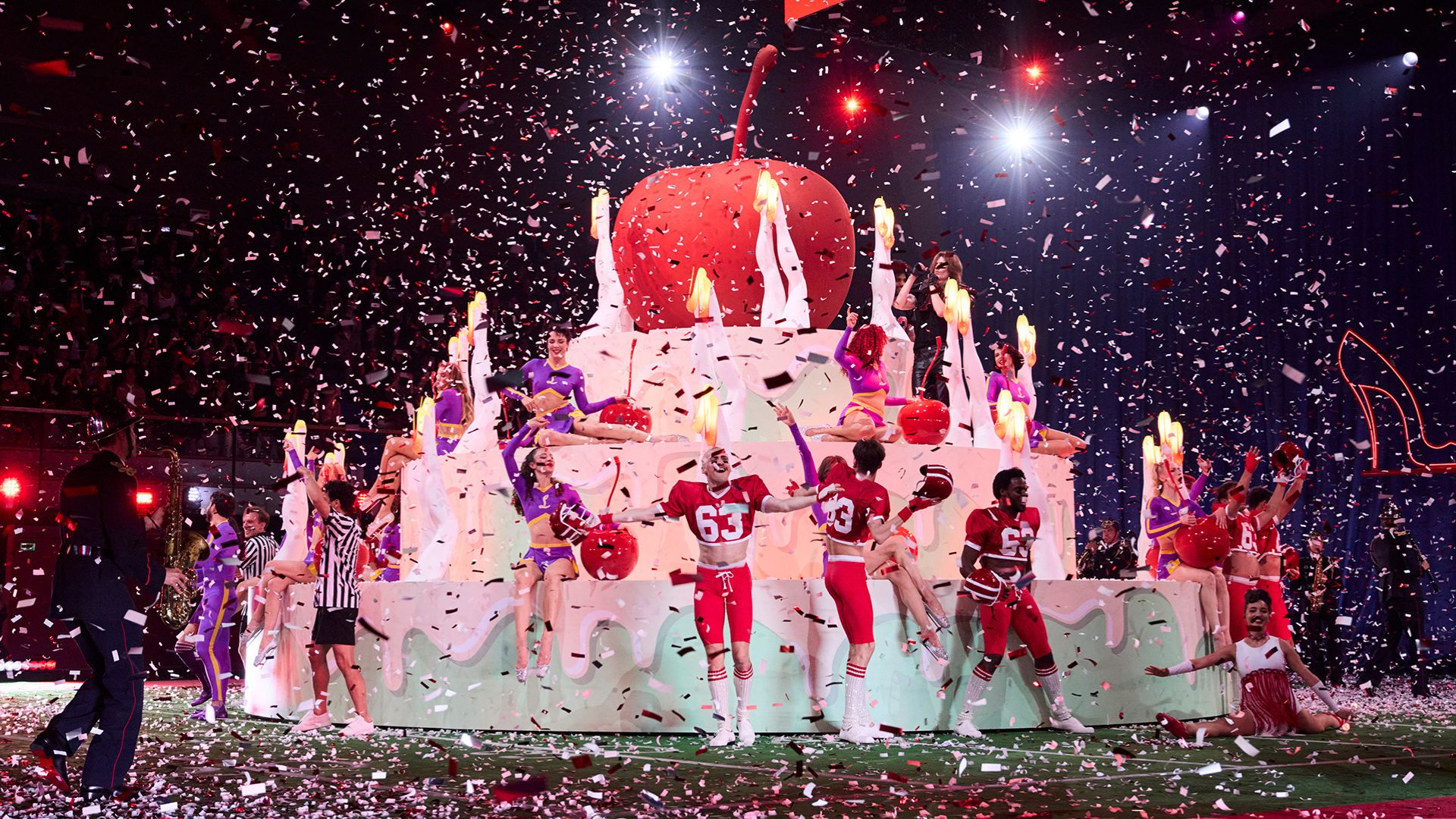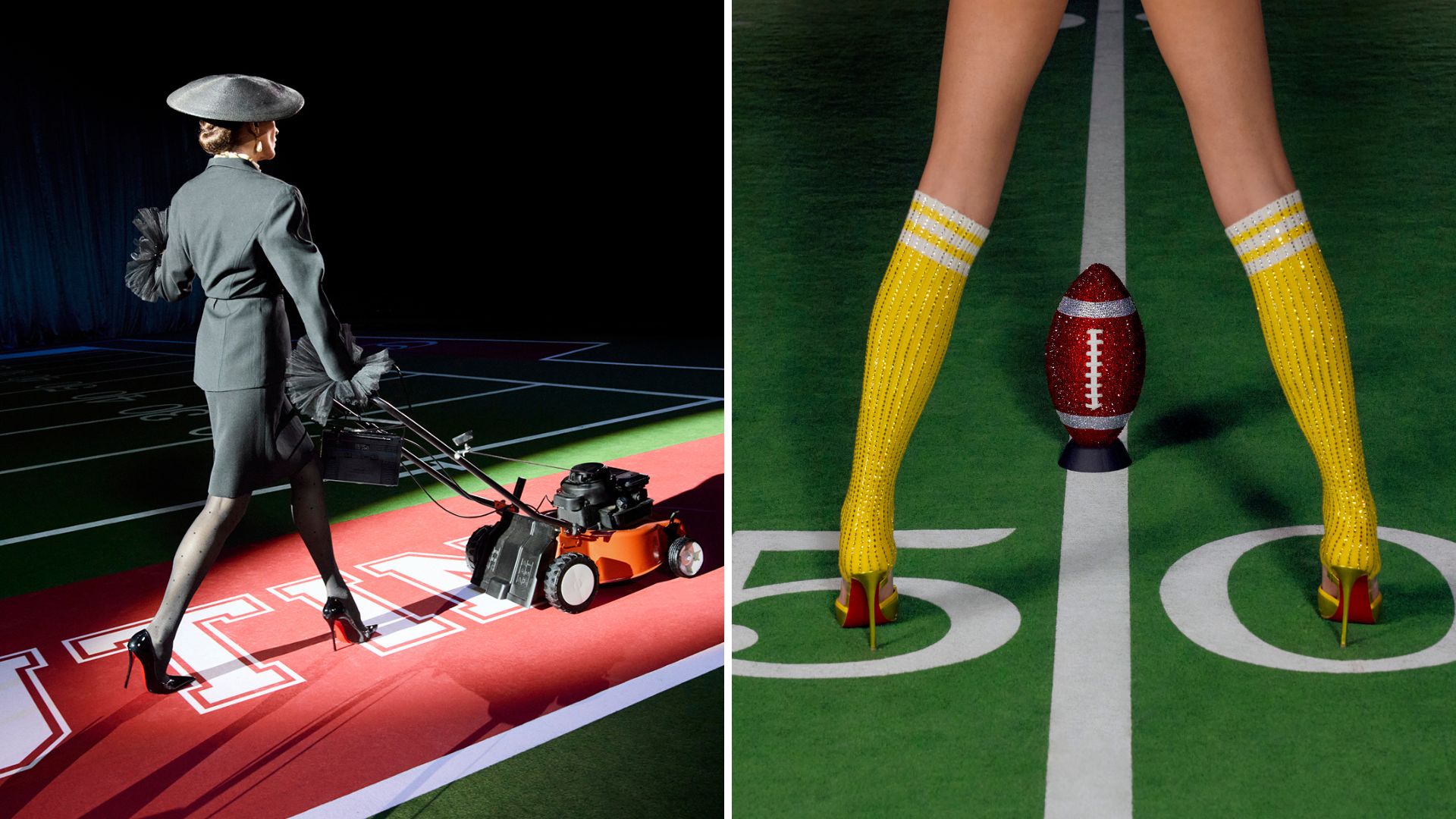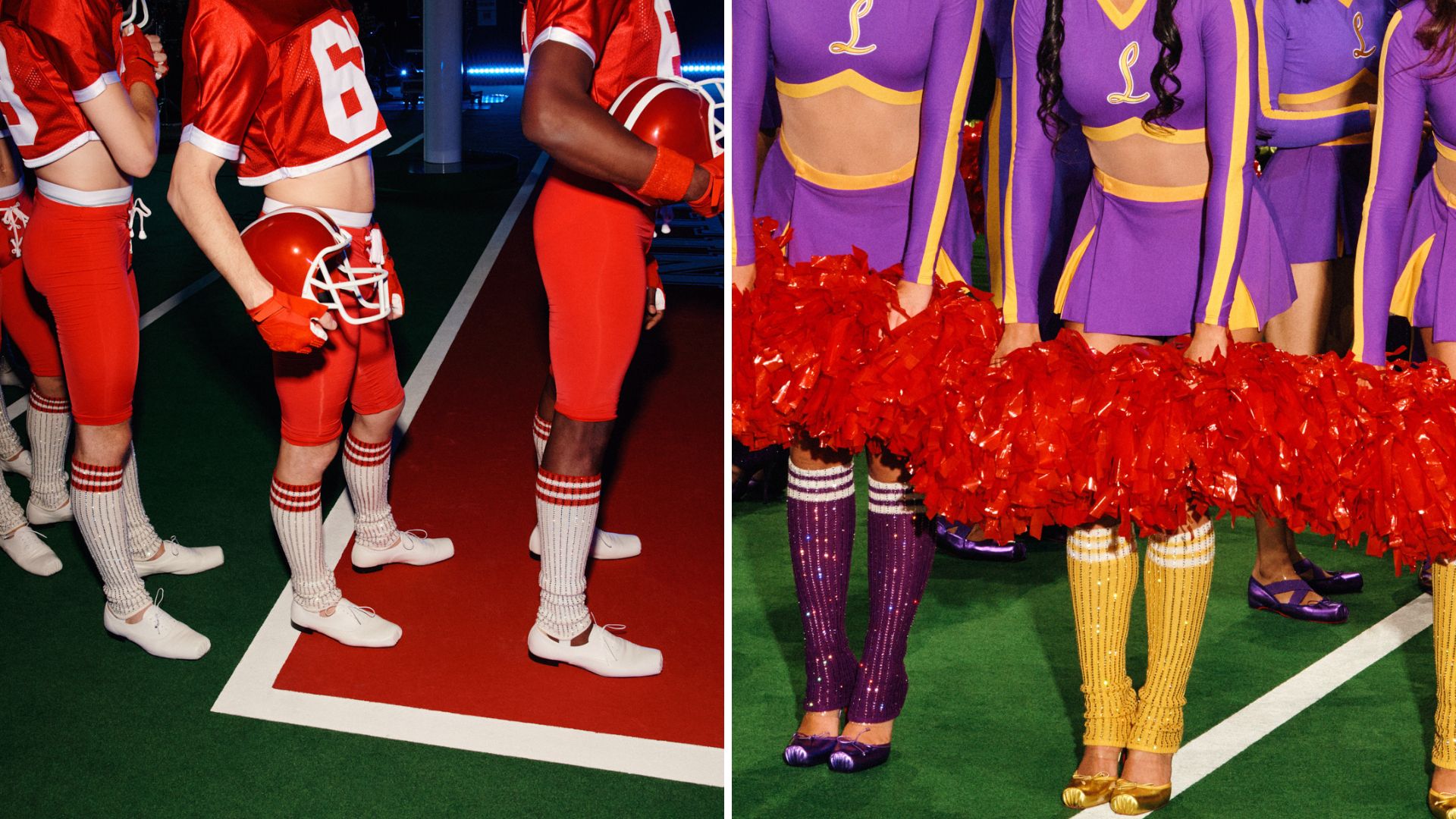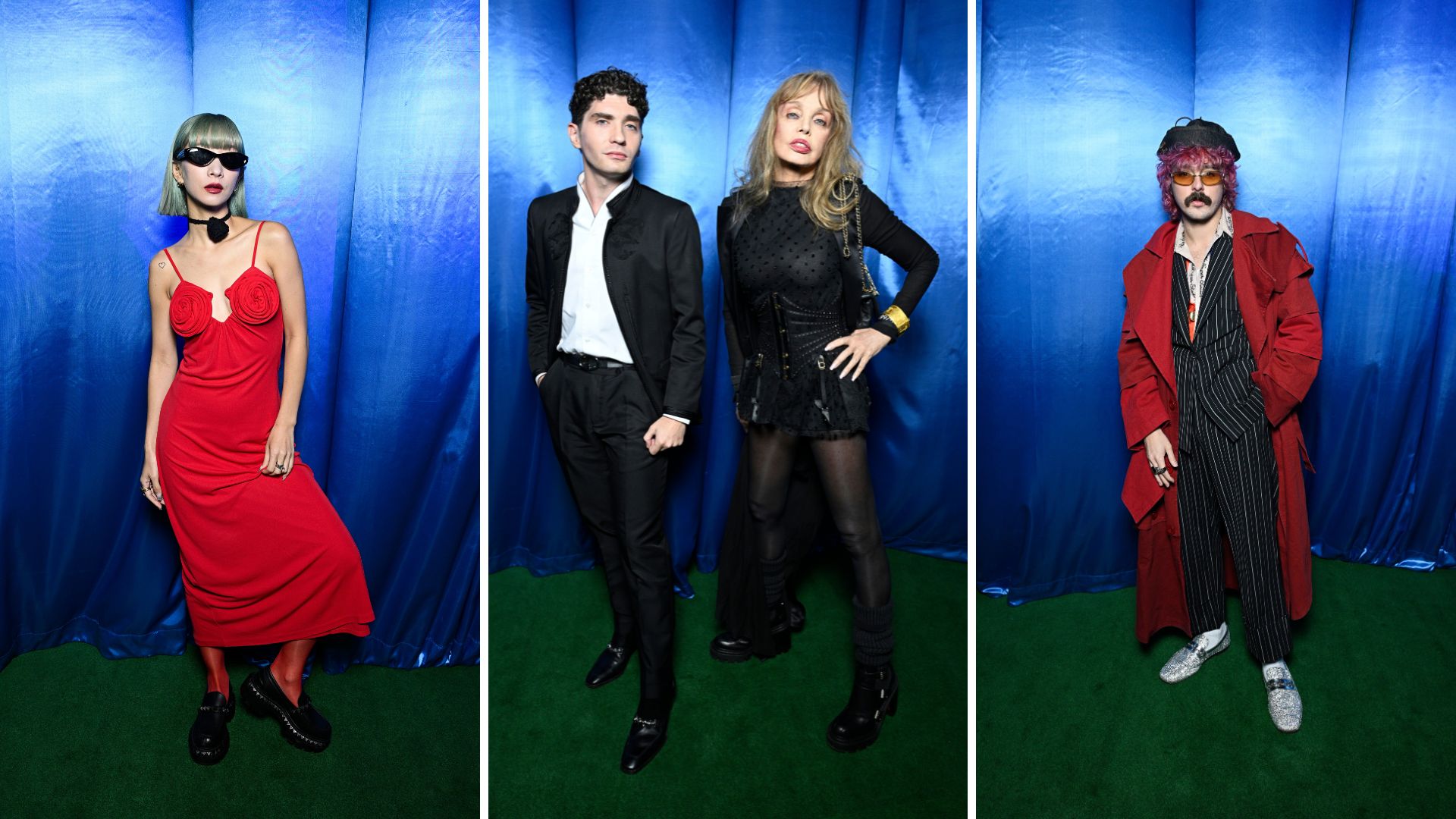After last year’s unforgettable water-soaked show, Christian Louboutin returned with another bold chapter of the Loubi Show, reuniting with David LaChapelle and Blanca Li for the Women’s Spring/Summer 2026 presentation.
This time, the stage was not a runway but an actual stadium—the Dojo Arena in Paris—where the designer explored the meeting point between art and athleticism.

Inspired by the communal spirit of American homecoming games, the immersive performance unfolded under the artistic direction of LaChapelle and choreography by Li. Divided into five acts, the show reimagined a night of celebration through a dynamic mix of performances—a marching band by the sapeur-pompiers de Paris (firefighter sappers of Paris), energetic cheerleading troupes, a live musical performance, and dancers portraying passionate football players. The finale brought the entire stadium to life in a vibrant display of joy and triumph.
Beyond the spectacle, the Loubi Show revisited the nostalgia of youth, evoking memories of freedom, fun, and boundless imagination. The homecoming theme served as a universal visual language—a reminder of teenage energy and collective joy.

In LaChapelle’s theatrical world, the field became a stage filled with whimsical characters. The show opened with a cameo from a Parisian model, described by LaChapelle as “as French as the Eiffel Tower,” who made her entrance with a lawnmower in hand. The scene continued with a baton twirler and a seahorse mascot—Louboutin’s favorite animal—bringing a playful spirit to the performance.
Music played an equally important role in the storytelling. French singer Asphalt, also known as Milo Thoretton, performed three songs that bridged French elegance and American energy, embodying the cultural dialogue that defined the show’s mood.

The final act paid tribute to Louboutin’s creativity and craftsmanship through the Ballerina Ultima, a sculptural heel first imagined in 2007. Reinterpreted for this collection with the Cassia shoe front and embellished entirely with strass (rhinestones), it appeared both as sculptural candles atop a giant cake and as wearable art on dancers’ feet.
This act also marked the expansion of the Cassia line into a full collection of ballet-inspired designs. The Cassia Annmac drew from the softness of leg warmers, the Cassiasticina mirrored the elegance of ballerina slippers, and the Ruben made history as the first Cassia design for men. Each piece reflected the grace of ballet set against the energy of sport—a seamless fusion of delicacy and dynamism.

Through this theatrical performance, Christian Louboutin once again proved his ability to transform fashion into art, capturing the joy, movement, and imagination that continue to define the world of the Loubi Show.


